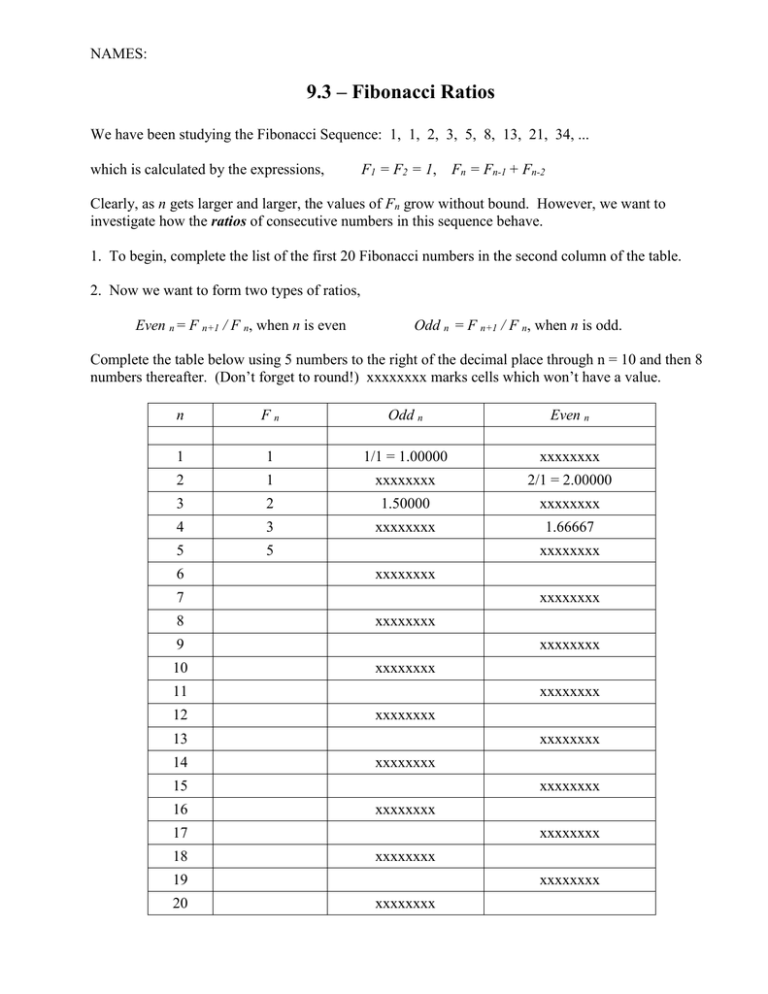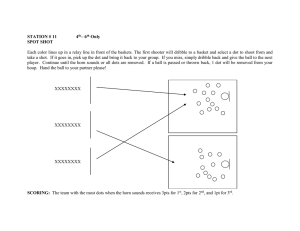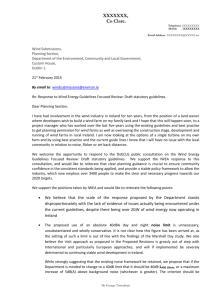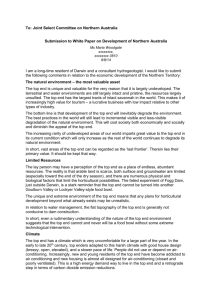Golden Ratio
advertisement

NAMES: 9.3 – Fibonacci Ratios We have been studying the Fibonacci Sequence: 1, 1, 2, 3, 5, 8, 13, 21, 34, ... which is calculated by the expressions, F1 = F2 = 1, Fn = Fn-1 + Fn-2 Clearly, as n gets larger and larger, the values of Fn grow without bound. However, we want to investigate how the ratios of consecutive numbers in this sequence behave. 1. To begin, complete the list of the first 20 Fibonacci numbers in the second column of the table. 2. Now we want to form two types of ratios, Even n = F n+1 / F n, when n is even Odd n = F n+1 / F n, when n is odd. Complete the table below using 5 numbers to the right of the decimal place through n = 10 and then 8 numbers thereafter. (Don’t forget to round!) xxxxxxxx marks cells which won’t have a value. n Fn Odd n Even n 1 1 1/1 = 1.00000 xxxxxxxx 2 1 xxxxxxxx 2/1 = 2.00000 3 2 1.50000 xxxxxxxx 4 3 xxxxxxxx 1.66667 5 5 6 xxxxxxxx xxxxxxxx 7 8 xxxxxxxx xxxxxxxx 9 10 xxxxxxxx xxxxxxxx 11 12 xxxxxxxx xxxxxxxx 13 14 xxxxxxxx xxxxxxxx 15 16 xxxxxxxx xxxxxxxx 17 18 xxxxxxxx xxxxxxxx 19 20 xxxxxxxx xxxxxxxx Notice that all of the values in the Odd column are smaller than any of those in the Even column. 3. Consider the sequence, Odd n. a. Are the values of Odd n increasing or decreasing as n grows? b. The values of Odd n appear to be approaching a single value as n gets large. What do you think that value might be? 4. Consider the sequence, Even n. a. Are the values of Even n increasing or decreasing as n grows? b . The values of Even n appear to be approaching a single value as n gets large. What do you think that value might be?



